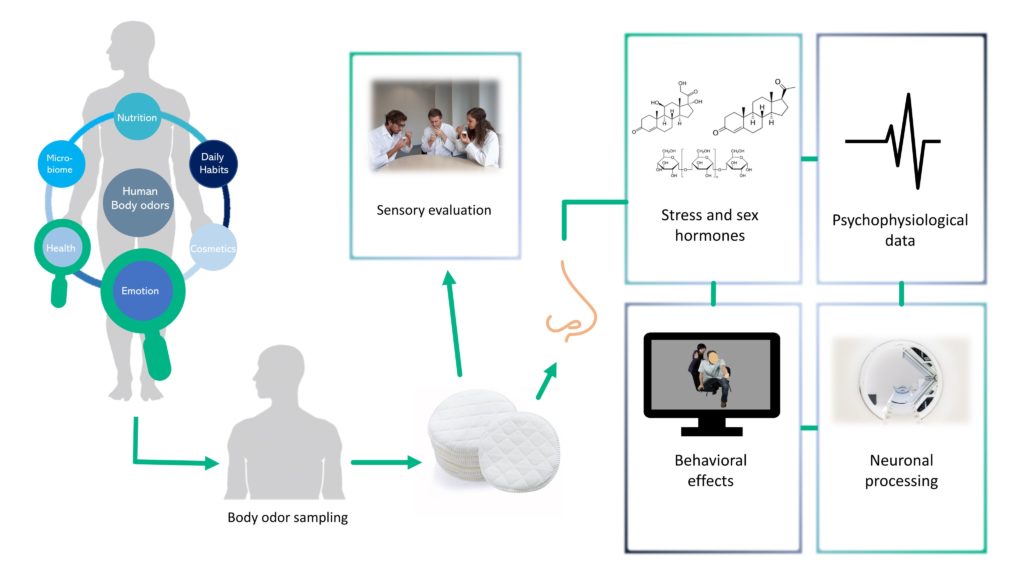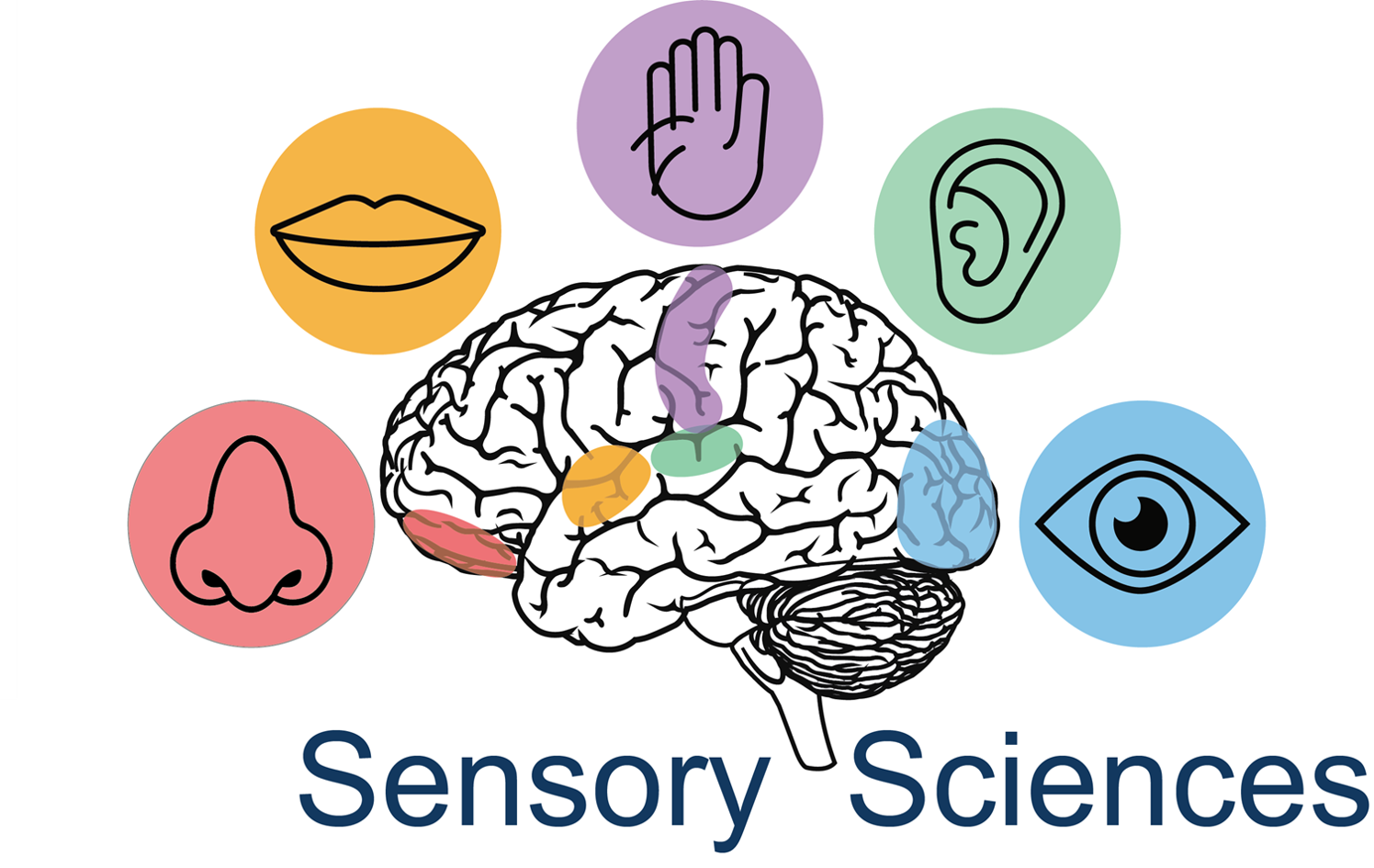Projects
Collaborative Projects
Molecular communication is omnipresent in living organisms. It occurs from a microbial to vertebrate level, and air-borne chemical communication can be considered part of it. Humans therein are still poorly understood and the possible implication of chemosensory information in human social interaction has long been neglected. Recent research has demonstrated that transmission of chemical information between humans leads to measurable physiological and behavioural effects. The current project, awarded by the Friedrich-Alexander-Universität Erlangen-Nürnberg (FAU) with the Faculty of Sciences’ Women’s Prize, aims at increasing our knowledge of the perception of emotional body odours in conjunction with their behavioural effects.
Coordinator: Dr. Helene Loos
Project Partner:
Prof. Dr. Jessica Freiherr (Neuroscience of Sensory Perception, FAU)

Humans integrate sensory stimuli from physical (e.g., sight, hearing, touch) and chemical senses (e.g., smell, taste) into a coherent multisensory perception of their environment, and they evaluate the pleasantness of their perception. For example, we perceive food based on its appearance and smell, and we assess whether we like a food or not. However, our brain should only integrate and evaluate multisensory stimuli that can be attributed to a common cause: when seeing and smelling food, the brain must first determine whether the appearance and smell were indeed caused by a single food item and not by different foods or other sources of odor. This project investigates, using psychophysical, psychophysiological, and EEG methods, how humans infer the causes of olfacto-visual stimuli from food, integrate or segregate the stimuli, and ultimately evaluate their multisensory pleasantness. The results will significantly expand our understanding of how the brain shapes, evaluates, and expresses the multisensory perception of food.
Coordinator: Prof. Dr. Tim Rohe
Project Partners:
Prof. Jessica Freiherr, Dr. Helene Loos, Prof. Dr. Andrea Büttner
